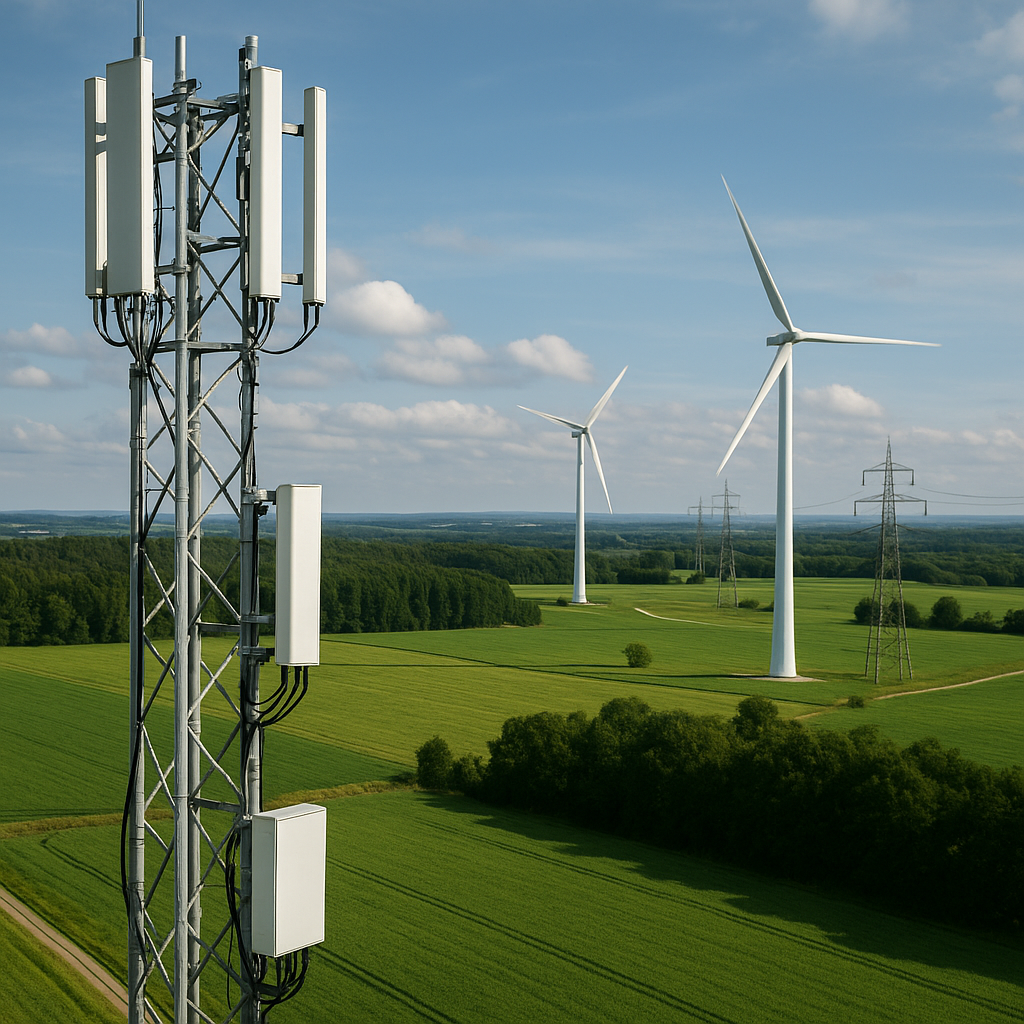How next-gen wireless networks are paving way for climate-smart grid systems
The paper identifies several technological enablers that together define a roadmap for greener connectivity. Low Power Wide Area Networks (LPWAN) such as LoRa and NB-IoT provide long-range, low-energy data transfer, ideal for dispersed sensors and devices. Wake-up radios allow energy savings by keeping modules in sleep mode until triggered, significantly lowering idle power use.

A new study maps out how next-generation wireless technologies, Beyond-5G (B5G) and 6G networks, will transform the Industrial Internet of Things (IIoT) and smart grids. The review paper, published in the journal Sensors, lays the groundwork for future integration of intelligent, energy-efficient communications into industrial and energy infrastructures.
Titled “How Beyond-5G and 6G Makes IIoT and the Smart Grid Green—A Survey”, the study provides an in-depth look at the interplay between advanced telecommunications and environmental sustainability, with a focus on low-latency, resilient, and interoperable systems for future smart infrastructure.
What enables green transformation in IIoT and smart grids?
The paper identifies several technological enablers that together define a roadmap for greener connectivity. Low Power Wide Area Networks (LPWAN) such as LoRa and NB-IoT provide long-range, low-energy data transfer, ideal for dispersed sensors and devices. Wake-up radios allow energy savings by keeping modules in sleep mode until triggered, significantly lowering idle power use.
Mobile Edge Computing (MEC) is another critical pillar, allowing data to be processed closer to the source. This not only saves energy on transmission but also enhances responsiveness in mission-critical IIoT applications. Furthermore, energy harvesting methods such as solar, thermal, and radio-frequency-based techniques are highlighted as promising solutions for creating self-powered, maintenance-free devices, particularly in remote deployments.
Advanced communication paradigms like reconfigurable intelligent surfaces, terahertz-band channels, and intelligent reflective technologies are also expected to support scalable and energy-optimized connectivity. These are seen as core features in the architectural evolution toward 6G networks, adding both capacity and efficiency.
By analyzing current capabilities and projected developments, the authors highlight how green-oriented communication technologies can be systematically integrated into IIoT and smart grid infrastructures. Such integration, they argue, will be essential in tackling real-time load distribution, energy storage coordination, and dynamic demand response - components vital for the energy transition.
How can next-gen networks optimize energy and data efficiency?
While enabling technologies are emerging, their orchestration through optimized system architectures is critical. The study reviews a variety of energy-aware resource management techniques tailored for 5G and upcoming 6G environments. These include artificial intelligence-driven network slicing, dynamic bandwidth allocation, and adaptive spectrum sharing.
These capabilities collectively reduce unnecessary data transmissions, power drain, and hardware overuse. In data center operations, where IIoT data is often stored and processed, energy-aware scheduling and smart cooling mechanisms were highlighted as essential optimization methods. These practices help mitigate the environmental impact of the digital layer that supports physical infrastructure.
The authors emphasize that integration of AI at multiple layers - from physical network configurations to cloud resource allocation - is increasingly central to managing the complexity of green IIoT networks. Machine learning algorithms can predict traffic loads and adjust operational parameters in real time, ensuring an optimal balance between performance and power usage.
Beyond internal network dynamics, the paper calls attention to interoperability as a major design concern. Current fragmentation between communication standards in telecom and energy systems hampers seamless data flow and coordinated control. The authors propose harmonized frameworks and open protocols to ensure that systems built on diverse technological platforms can still communicate effectively.
What role will 5G and 6G play in smart grid resilience?
The study evaluates how ultra-reliable and low-latency communications, made possible by 5G and future 6G capabilities, are crucial for modernizing the power grid. Applications such as fault detection, distributed energy generation, intelligent feeder automation, and precise load balancing require instant and uninterrupted data exchanges.
The researchers examine use cases where grid operations can benefit from high-bandwidth, latency-sensitive communication, such as the coordination of electric vehicle charging stations, integration of rooftop solar, and remote control of substations. The inherent complexity and decentralization of future energy systems demand robust and real-time communication, which 6G is expected to deliver with greater precision and coverage.
By embedding intelligence into both network management and energy infrastructure, the study envisions a future where outages are minimized, response times are reduced, and operational inefficiencies are proactively addressed. This convergence not only supports decarbonization goals but also strengthens system resilience in the face of growing demand and climate-induced instability.
The research offers a roadmap that highlights pressing gaps for further investigation. These include the development of energy-efficient IoT devices capable of handling terahertz communication, the creation of standardized interoperability protocols, and the application of federated learning for distributed smart grid decision-making.
- READ MORE ON:
- Beyond-5G (B5G)
- 6G networks
- Industrial Internet of Things (IIoT)
- Low-power IoT networks
- Smart energy systems
- AI in smart energy networks
- Resilient energy systems
- How 6G enables sustainable smart grid deployment
- Energy-efficient IIoT solutions using 5G and 6G
- Wireless technologies for green industrial systems
- FIRST PUBLISHED IN:
- Devdiscourse










